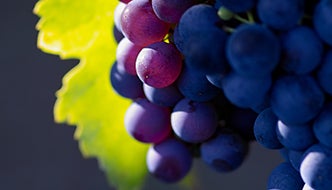The Lighting Research Center (LRC) at Rensselaer is collaborating with Cornell University on a $6.5 million grant from the U.S. Department of Agriculture’s National Institute of Food and Agriculture Specialty Crop Research Initiative to develop the next generation of grapes. The project, VitisGen2, is a collaboration of 25 scientists from 11 institutions who are working in multidisciplinary teams to accelerate development of new grape varieties that are more flavorful and sustainable.
The LRC will be partnering with Lance Cadle-Davidson of the USDA Agricultural Research Service and David Gadoury of Cornell University to create an automated phenotyping system, which will quantify the amount of plant pathogens, such as powdery mildew, found on grape leaves. The system will incorporate novel lighting and image processing techniques to dramatically improve diagnostic and assessment speeds. In partnership with U.S. grape breeders, the research team will use the phenotyping system for genetic analysis of resistance to these pathogens. One outcome of VitisGen2 will be new grape varieties with natural resistance to common pathogens.
The team is also looking at ways to track the plant pathogen population, allowing researchers to determine which pesticides are most effective at specific times of the season, thereby reducing pesticide spraying and increasing its efficacy.
The overall goal of the project is to develop high-quality grapes that can be grown at lower cost and adapt easily to a range of geographic regions and climates, all with less environmental impact.
The work has the potential to save millions of dollars annually for the U.S. grape industry—in excess of $100 million in California alone, according to Bruce Reisch, professor of grapevine breeding and genetics at Cornell, who co-leads the project with Cadle-Davidson.
Looking to the future, the VitisGen2 teams aim to expand the use of high-throughput DNA and plant evaluation technology to improve the quality of wine, raisin, and table grapes, as well as rootstocks. VitisGen2 is using genome sequencing to identify markers within numerous genes of interest to better understand which genes are controlling priority traits.
Ultimately, VitisGen2 will bring greater efficiency to grape growing, which is an intensive, comprehensive, and costly process.



